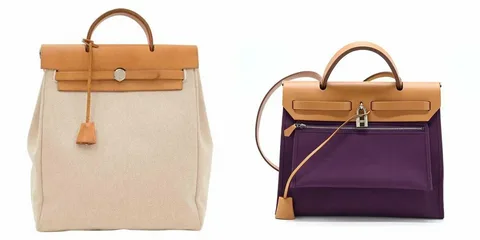In recent years, sustainability has become a central topic in the fashion industry. As consumers grow more environmentally conscious, many are seeking eco-friendly alternatives to traditional luxury items. Among these alternatives, the herbag has sparked discussions about its place in sustainable fashion. But what makes it stand out, and can it truly be considered an eco-friendly choice? Let’s explore the eco-friendly side of fashion by examining the Herbag’s sustainability credentials.
Understanding the Herbag: A Blend of Style and Functionality
The Herbag is a classic accessory originally designed by Hermès, known for its unique combination of canvas and leather. Unlike other handbags, its structure allows the canvas body and leather flap to be easily detached and replaced, extending the life of the bag significantly. This innovative design has led many to wonder if the Herbag’s durability and modular components make it a sustainable option in the luxury market.
The Eco-Friendly Side of Fashion: Durability and Longevity
One of the main factors contributing to sustainability in fashion is durability. Fast fashion encourages frequent purchases and disposability, which severely impacts the environment. In contrast, the Herbag’s robust materials and replaceable parts mean it can last for many years without needing to be discarded or replaced entirely. This longevity reduces waste and lessens the environmental footprint associated with manufacturing new bags.
Furthermore, the ability to replace worn-out parts instead of the entire bag aligns well with the principles of circular fashion—a movement that emphasizes reducing waste through repair, reuse, and recycling.
Materials Matter: Canvas and Leather in the Herbag
While the Herbag features durable materials, its sustainability is partly dependent on the sourcing and treatment of these components. The canvas used in Herbags is often made from cotton, a natural fiber that, when grown organically, has a lower environmental impact than synthetic alternatives. However, conventional cotton farming can be resource-intensive, requiring significant water and pesticides.
The leather used in the Herbag adds to its luxury appeal, but leather production has environmental challenges, including methane emissions from livestock and chemical pollution from tanning processes. That said, Hermès is known for sourcing high-quality leather and often implements stricter environmental standards than many other brands.
Is the Herbag a Sustainable Choice?
When considering the eco-friendly side of fashion, the Herbag presents a compelling case. Its modular design, durability, and repairability make it a more sustainable alternative to disposable handbags or fast fashion items. However, the sustainability of the materials themselves depends on factors like responsible sourcing and ethical production methods.
For consumers looking to invest in a luxury handbag that balances style with eco-conscious values, the Herbag offers a thoughtful choice. By choosing a bag designed to last and be repaired, buyers support a move away from wasteful consumption patterns.
Conclusion
The eco-friendly side of fashion is gaining momentum, and the Herbag exemplifies how thoughtful design can contribute to sustainability in the luxury market. While no product is entirely without environmental impact, the Herbag’s durability, repairability, and timeless style make it a strong contender as a sustainable choice. For those seeking to reduce their fashion footprint without sacrificing elegance, the Herbag is worth considering as a more eco-friendly handbag option.


